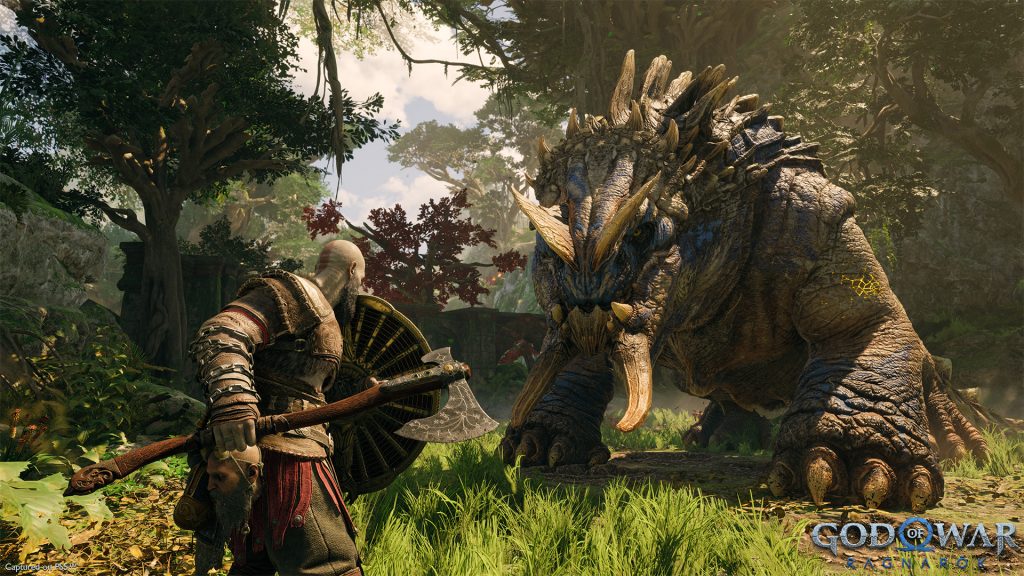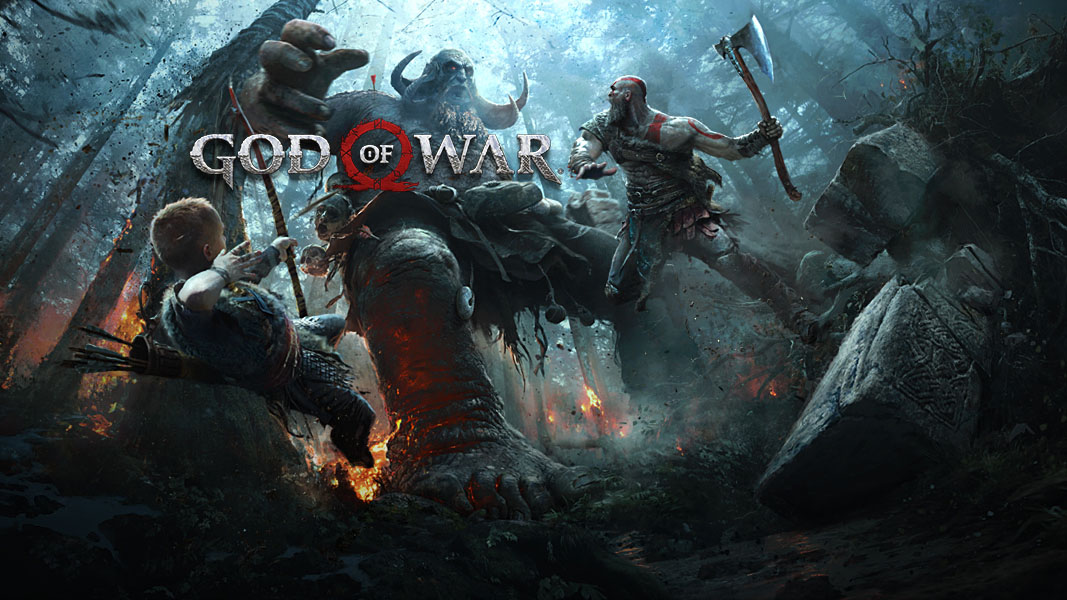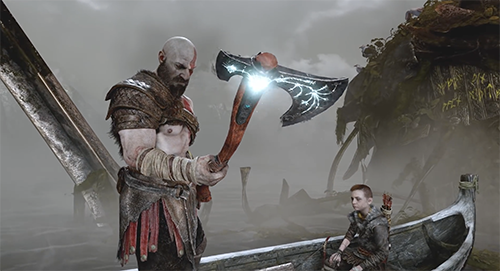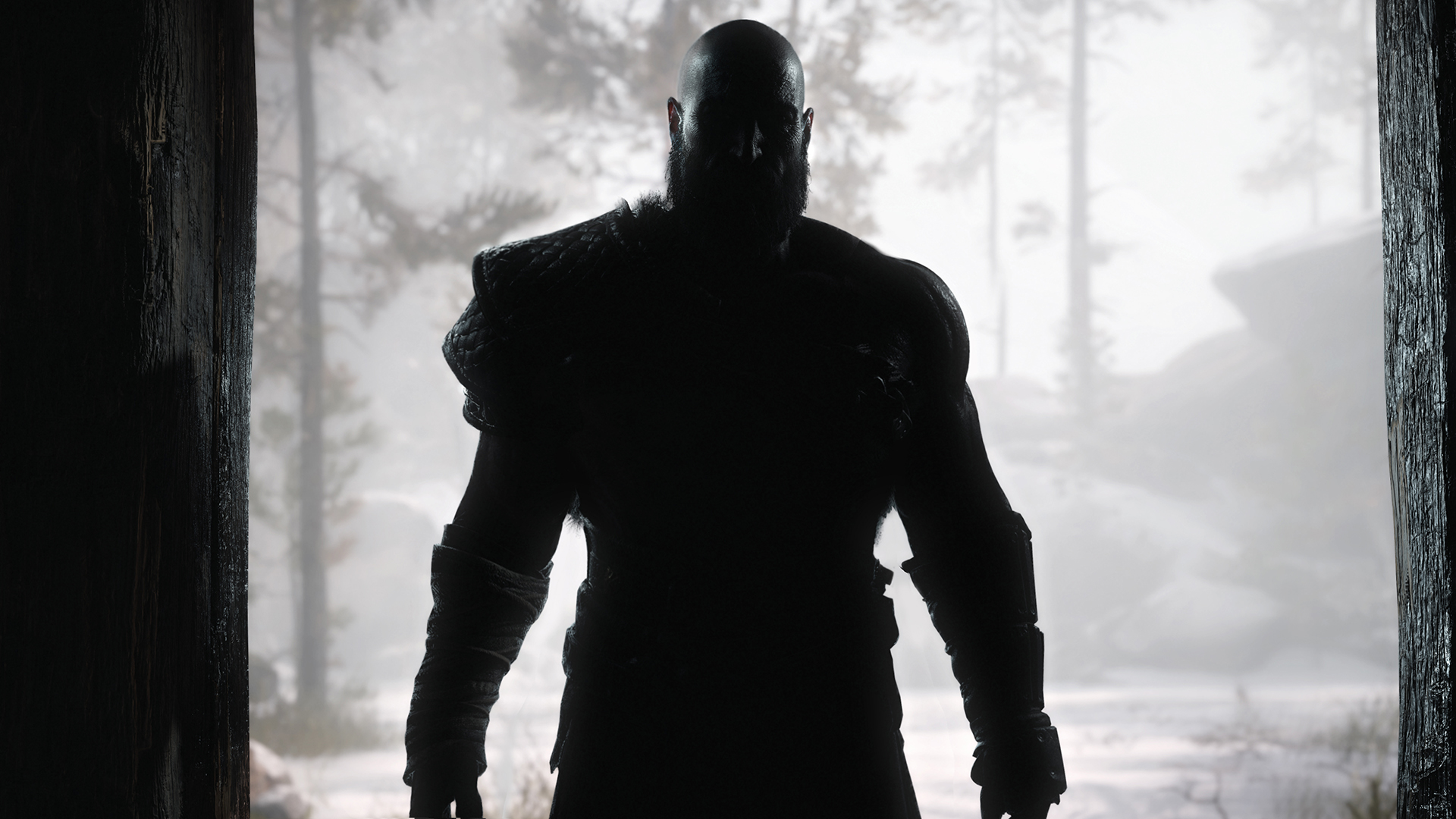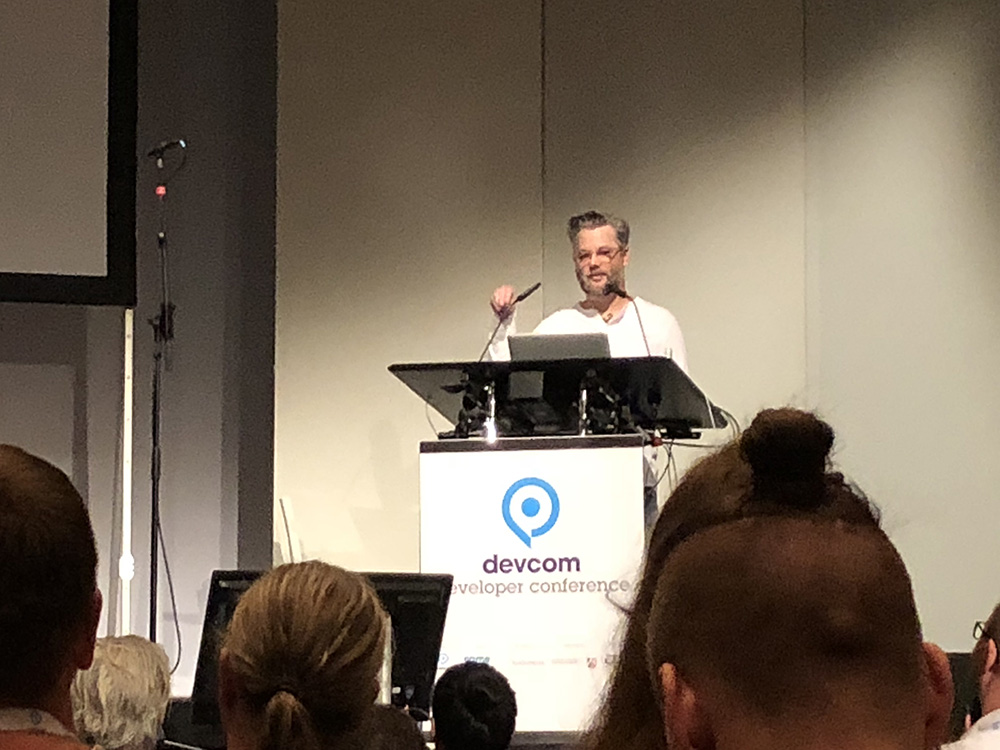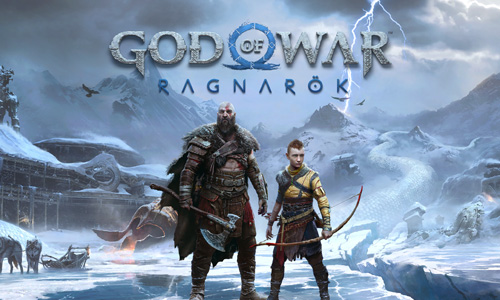
Few series have been able to re-invent themselves in quite the same way that God of War managed to do in 2018, not only transplanting the narrative from its origins in Greek mythology pastiche to the world of Norse gods, but also revamping the gameplay, systems and even the characterisation and focus of its lead protagonist. In doing so, Santa Monica Studio managed to not only revitalise the God of War series, but actually find a new purpose beyond the simple murder-ball of vengeance that its hero Kratos represented up until that point, giving the titular former God of War a son and the responsibility to protect and shape him. God of War Ragnarök, a sequel to the 2018 reboot available both on PS5 and PS4, is not as transformative as that game was, nor could it ever realistically be. However, it builds upon and expands everything introduced in the original, in just about every way a fan could hope for.
Starting with the obvious, God of War Ragnarök’s Kratos character model might just be one of the most detailed I’ve ever seen in a game, and while it helps that the old bastard is a lot more wizened and wrinkly for all that extra detail, the performance conveyed both through the team of artists and Christopher Judge’s portrayal can be stunningly real at times. The soft changes in emotion reflected in the character’s eyes is actually unbelievable, elevating Kratos even further from his less complex days on the PlayStation 2 screaming at everything that comes across his path. While not every character receives the same care and detail, important ones do – particularly Thor, introduced properly in this game as a far more troubled individual than you might have expected, and Odin, portrayed by Richard Schiff as more of a mob boss than a megalomaniacal ruler like Zeus. Interestingly, both have aspects that remain true to their mythological roots, but fleshing them out into fully realised characters.
Environments, too, lend a lot of character to the nine realms featured in Ragnarök. At the game’s outset, Fimbulwinter has set in, transforming the normally verdant world of Midgard into a winter wonderland, but the season has had different effects on the other realms, which run the gamut from jungle-like wilderness to rockpool-filled beaches and lava-filled wastelands. Rather than centring around a single large realm, with excursions to other smaller realms, Ragnarök takes the approach of expanding each of the realms enough into larger, if not 2018 Midgard’s size, self-contained worlds, where Kratos can pursue side quests or ‘favours’ in semi-linear areas, with alternate paths hidden behind environmental puzzles requiring abilities required later. Some parts of the realms will be familiar to players of the original, and if you play through all of the game’s content you’ll be visiting each realm multiple times, but
Ragnarök’s narrative continues on from God of War, both in expected and unexpected ways. The original game had relatively limited inclusions of the Norse pantheon, focusing mainly on Baldur, but Ragnarök feels free to blowout in touching on just about everything else. Of course, what made the original story work was its focus on the relationship between Kratos and his son, Atreus, and the evolution of that is what Ragnarök is really about. Atreus, upon learning of his destiny as Loki at the conclusion of the last game, is starting to grow up, and Kratos is starting to feel a little bit like the father figure from cinematic classic A Goofy Movie. Cat’s in the Cradle stuff. While Ragnarök introduces a raft of new characters, from gods to squirrels to ordinary mortals, and a coming war that could encompass all nine realms, Ragnarök succeeds most when it returns to its two leads, who are both still evolving and growing, and more alike in more ways than they may think. It’s difficult to discuss the overarching story without giving away spoilers that might affect your enjoyment, but suffice to say that Ragnarök provides a satisfying follow-up to the threads introduced in the original game, while still allowing plenty of opportunities for tremendously effective action sequences.
Combat in Ragnarök has evolved and expanded from God of War, although I wouldn’t say it’s been revamped. Kratos still has access to his armaments from the first game, namely the ice-powered Leviathan Axe and his firey Blades of Chaos, which are both available from the outset this time around, and are now able to be powered up with elemental forces to counter enemies weak to them. There are new abilities to unlock, new runic attacks to equip, as well as a raft of armours and shields to change up your defensive strategy. However, combat in Ragnarök feels like it works best when Kratos is on the offensive, as aggression is rewarded by keeping enemies on their toes, stunning them and pinning them down. A couple of new weapons are thrown into the mix, although the best of these plays to the game’s fondness for juggling enemies mid-air, allowing you to pull off some spectacularly damaging combos if you know what you’re doing.
Some of the clumsiness I felt was in the last God of War‘s combat makes a return in this game, although the game does present solutions for dealing with them. Enemies can still sneak up on you due to the camera perspective, even with on-screen indicators and audio cues from companions, but having Kratos’ Blades of Chaos available from the beginning in Ragnarök gives the player a little more latitude in executing area attacks, rather than having to stay focused on a single enemy. Similarly, searching for health chunks on the battlefield to heal Kratos can be a little awkward, when you often don’t have a comprehensive view of the area, but upgrades to Kratos’ Rage meter allow you to re-fuel your health in small boosts, mitigating this frustration somewhat. Notably, enemy and boss variety is a lot better this time around, with only a few select repeats of boss fights that stand out, and nothing like the repeated Troll encounters from the original game. Thanks, Santa Monica.
When you’re not fighting monsters, you’ll be traversing the nine realms’ many puzzles, some of which will be familiar to players of 2018’s God of War. Many of the puzzles still boil down to ‘have the right weapon to open up this pathway’, but the best are some creative uses of the Leviathan Axe’s freezing abilities to, for instance, guide water, and the Blades of Chaos’ ability to ignite objects, which becomes fairly intricate when paired with a chain-reaction effect later in the game.
There’s a significant amount to do in Ragnarök, and while the game’s main ‘Path’ alone will take you around 30 hours to beat, there’s certainly dozens of hours more content in the favours, labours, challenges and upgrades found throughout every realm. At each one, you’re frequently encouraged to chill and explore, spend some time on the many plot-heavy side missions and learn some more about the game’s world. Points that are difficult to return to are signalled clearly, but the amount of detours even within the main game’s narrative does affect the pacing somewhat, resulting in some long, leisurely stretches, before rapidly racing to the conclusion in the final 10% of the game.
God of War Ragnarök is a cross-gen title, developed both for PS4 and PS5, and while it’s successful in disguising this in many areas, this nature is still present throughout. Travelling between realms, in theory potentially near-instantaneous with current-day SSD speeds, still require lengthy dialogue sequences as you travel the branches of the World Tree, waiting for the conversation to finish before a doorway opens allowing you to proceed to the next world, or chats while squeezing through tight passageways to the next area. There’s even quite a few lengthy Uncharted-era climbing sequences, which are not necessarily poorly done but show their age. However, playing on PS5 does bring certain advantages, not only in visual detail but in both Graphic and Performance modes, and a super-smooth VRR-enabled option as well. This is all getting quite picky, as these are less faults of the game as they are just creative choices that have been carried over from its predecessor, and ultimately Ragnarök feels amazingly cohesive and polished nevertheless.
God of War Ragnarök is everything fans could hope for after 2018’s God of War. It’s a satisfying evolution and expansion of that game, not only in gameplay and design, but in narrative and scope as well. It doesn’t have quite the impact that 2018’s revamp landed with, but it makes up for it with welcome additions to combat, puzzle-solving, environments and some absolutely glorious spectacle. It’s also quite a meaty experience, if you’ve got the time to explore all of its hidden routes and secrets, with some particularly cute Sony-related Easter Eggs strewn around as well. It’s a big blockbuster of a game, with titanic battles between muscled gods, but it also has a little something to say about both growing up, and growing as a person. In other words, it’s the perfect successor to God of War.
This review is based on review code provided ahead of release by PlayStation Australia.
-Fleshed out nine realms, ripe with side activities to explore -Expanded and evolved combat plays to the system's strengths -Stunning visual work on key characters -Great performances across the board -Bear McCreary's soundtrack gives me the chills
-While additions to the combat system help, it can still feel a little clumsy navigating the battlefield -Its cross-gen nature holds it back from completely embracing the advantages of the PS5



